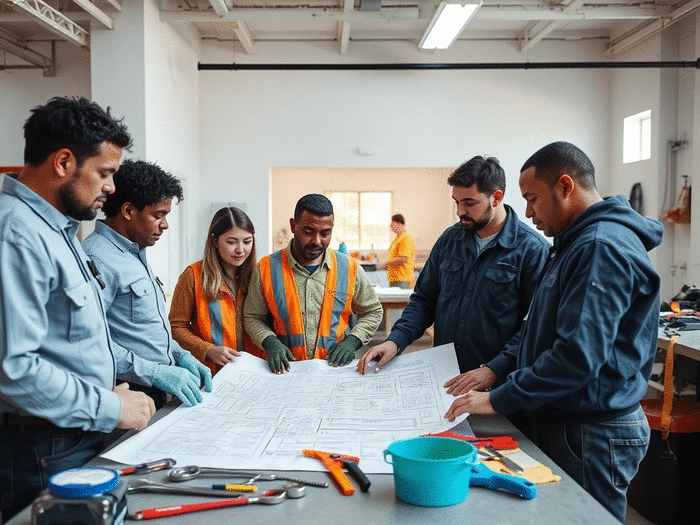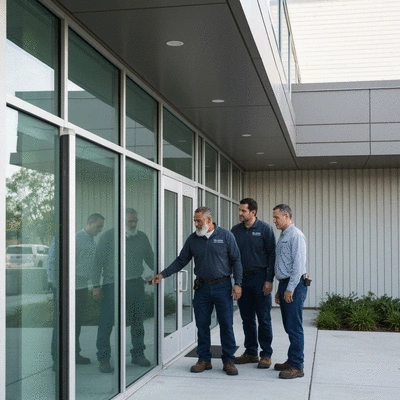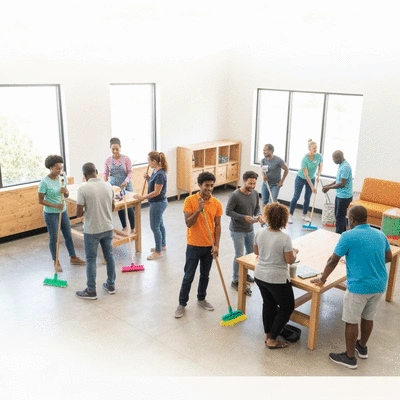Why Prioritize Facility Maintenance?
- • Preserving Assets: Extends property lifespan.
- • Enhancing Safety: Prevents hazards for staff & clients.
- • Attracting Funding: Demonstrates professionalism.
- • Supporting Operations: Ensures mission continuity.
Get exclusive insights, tips, and updates on home renovations and facility maintenance from Myles Properties.
Posted on: 2025-10-28
By: Samuel T. Masters
Have you ever considered how the state of a nonprofit's facilities might directly influence its mission? The way an organization maintains its physical space can tell a story about its values and commitment to the community it serves.
Nonprofits often juggle tight budgets, making facility maintenance seem like a secondary concern. However, strategic upkeep is crucial for long-term success. This visual highlights the key benefits and actionable steps for effective facility management.
As someone who has worked closely with numerous nonprofits through Myles Properties and General Contractors LLC, I’ve seen firsthand just how critical specialized facility maintenance can be for organizations striving to make a difference. When nonprofits prioritize facility upkeep, they not only protect their assets, but they also support their missions more effectively. In this section, we’ll explore why facility maintenance should be a central focus for nonprofits.
Many nonprofits operate on tight budgets, often leaving maintenance as an afterthought. However, neglecting this essential aspect can lead to costly repairs and service interruptions that undermine their mission. By understanding the importance of maintenance, nonprofits can not only avoid these pitfalls but also enhance their overall impact on the communities they serve.
Facility maintenance is often not at the forefront of a nonprofit's agenda, but it should be! Here are several compelling reasons why nonprofits must prioritize it:
When nonprofit organizations take a proactive approach to facility maintenance, they can significantly improve not only their operational efficiency but also their community reputation. This investment pays off in many ways, from financial savings to enhanced community trust.
Ultimately, the mission of a nonprofit is to serve the community. Facility maintenance plays a crucial role in this mission by ensuring that the spaces where these organizations operate are safe and welcoming. When facilities are well-maintained, they reflect an organization’s commitment to its cause and its community.
Consider the following aspects of how maintenance aligns with mission support:
By focusing on facility maintenance, nonprofits can enhance their ability to serve the community. It’s not just about keeping the lights on; it’s about creating an environment where good work can flourish!
Have you ever faced challenges in maintaining your nonprofit's facilities? We want to hear from you! Please share your experiences:
A1: Despite tight budgets, facility maintenance is crucial for nonprofits because it preserves assets, extends their lifespan, enhances safety for staff and clients, attracts funding by demonstrating professionalism, and supports overall operational effectiveness, ultimately preventing more costly repairs and disruptions in the long run.
A2: A well-maintained facility signals professionalism, stability, and good stewardship of resources to potential donors and grant providers. It shows that the organization is responsible and capable of managing its assets, which can inspire greater confidence and willingness to invest in its mission.
A3: Volunteers are a tremendous asset for facility maintenance. They can assist with basic tasks like painting, cleaning, and landscaping during community service days. Engaging volunteers not only helps with upkeep but also strengthens community ties, fosters a sense of ownership, and builds support for the nonprofit's mission.
A4: Nonprofits should start by assessing their current facility condition to identify needs and potential upgrades. Next, they should develop a detailed maintenance plan with timelines for regular inspections and repairs, and budget for these costs, seeking grants or donations if necessary. Finally, consider engaging professional services and volunteers.
A5: Nonprofits can find professional services through local contractor networks, online platforms like Thumbtack and Angie’s List, or by forming community partnerships with local businesses or universities that may offer services at a discounted rate. Veteran-owned firms, such as Myles Properties, often provide dedicated service to nonprofits.
As we’ve explored, the importance of specialized facility maintenance for nonprofits cannot be overstated. It’s not just about keeping the lights on; it’s about ensuring a safe, healthy, and efficient environment for everyone involved. By prioritizing facility maintenance, nonprofits can leverage key benefits that directly support their mission and community engagement.
Here’s a quick recap of the main advantages:
In the words of our team at Myles Properties, “It’s about building a strong foundation—both literally and figuratively!” We believe that when nonprofits invest in their facilities, they invest in their future and the communities they serve.
Now is the perfect time for nonprofits to either start or enhance their facility management practices. Whether you’re managing an existing facility or planning a new one, the right maintenance strategy is essential for fostering growth and ensuring sustainability. As a veteran-owned firm with over 25 years of experience, we’ve seen firsthand how effective maintenance can transform a space and improve organizational impact.
Consider taking a step forward by:
Every little step counts! Whether it’s a small repair or a complete overhaul of maintenance strategies, remember that prioritizing facility management is investing in the mission of your organization.
Taking action towards specialized maintenance is a journey that begins with a few simple steps. First, assess your current facility condition. Organize a meeting with your team to discuss ongoing issues and potential upgrades. This collaborative approach not only strengthens your team but also aligns everyone with common goals.
Next, consider developing a maintenance plan that outlines everything from routine inspections to emergency responses. Here’s how you can get started:
By following these steps, nonprofits can create a proactive maintenance culture that enhances their facilities and their mission.
Finding the right professional facility management services can significantly ease the burden on nonprofit staff. Here are a few resources you might consider:
At Myles Properties, we’re proud to serve the Memphis area and are always ready to partner with nonprofits to enhance their facilities. Don’t hesitate to reach out for assistance!
Volunteers can be a tremendous asset when it comes to facility maintenance. Engaging community members not only strengthens ties but also fosters a sense of ownership and pride in the facilities. Here are some ideas for involving volunteers:
Utilizing volunteers not only helps with maintenance tasks but also strengthens community connections, making your nonprofit a pillar of support within the community.
Here is a quick recap of the important points discussed in the article:



 Have you ever considered how upgrading your home can not only save you money but also contribute to
Have you ever considered how upgrading your home can not only save you money but also contribute to
 Imagine you’re responsible for the upkeep of a bustling facility, and one day you discover a signi
Imagine you’re responsible for the upkeep of a bustling facility, and one day you discover a signi
 Deciding between outsourcing and in-house facility maintenance can feel like navigating a maze. The
Deciding between outsourcing and in-house facility maintenance can feel like navigating a maze. The